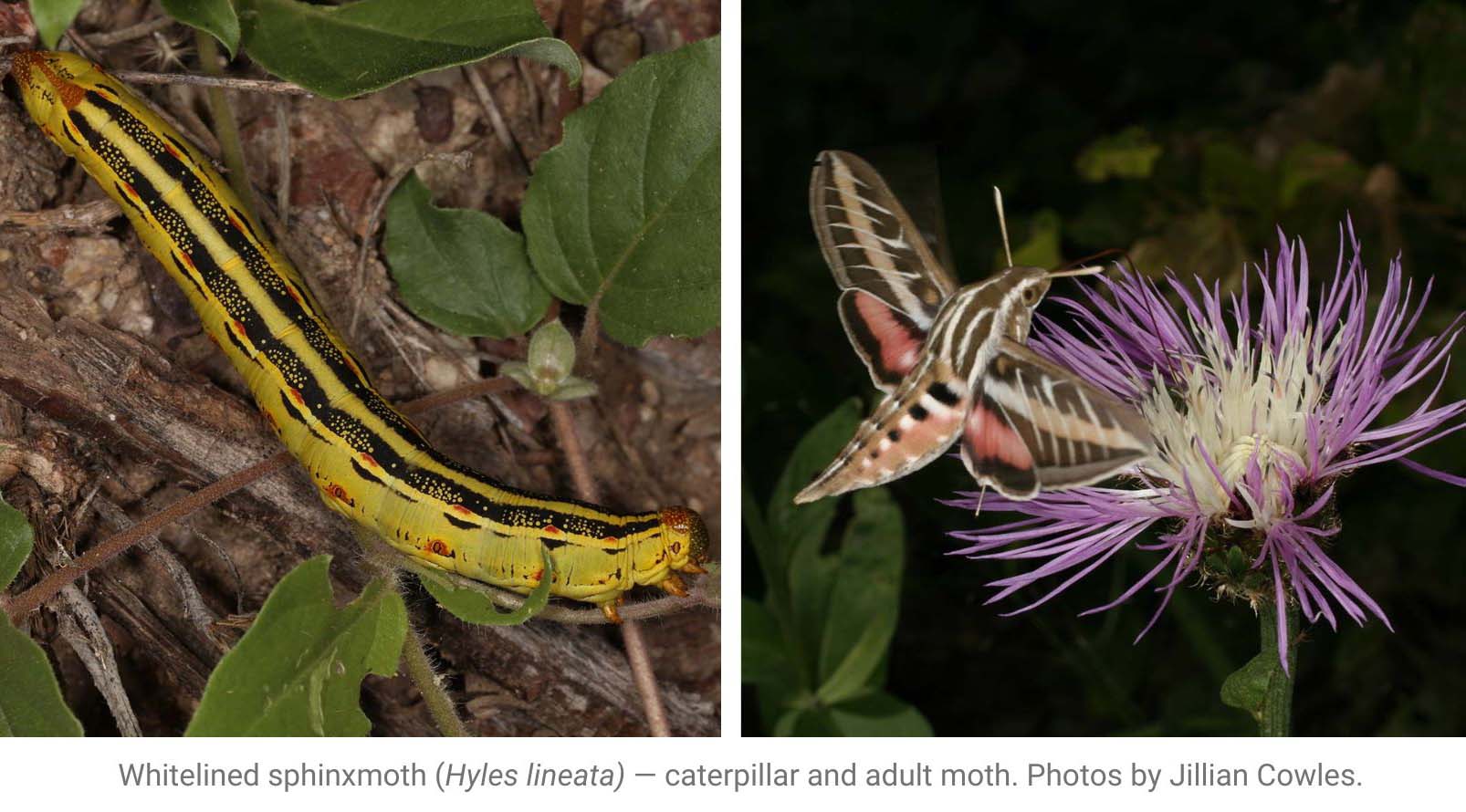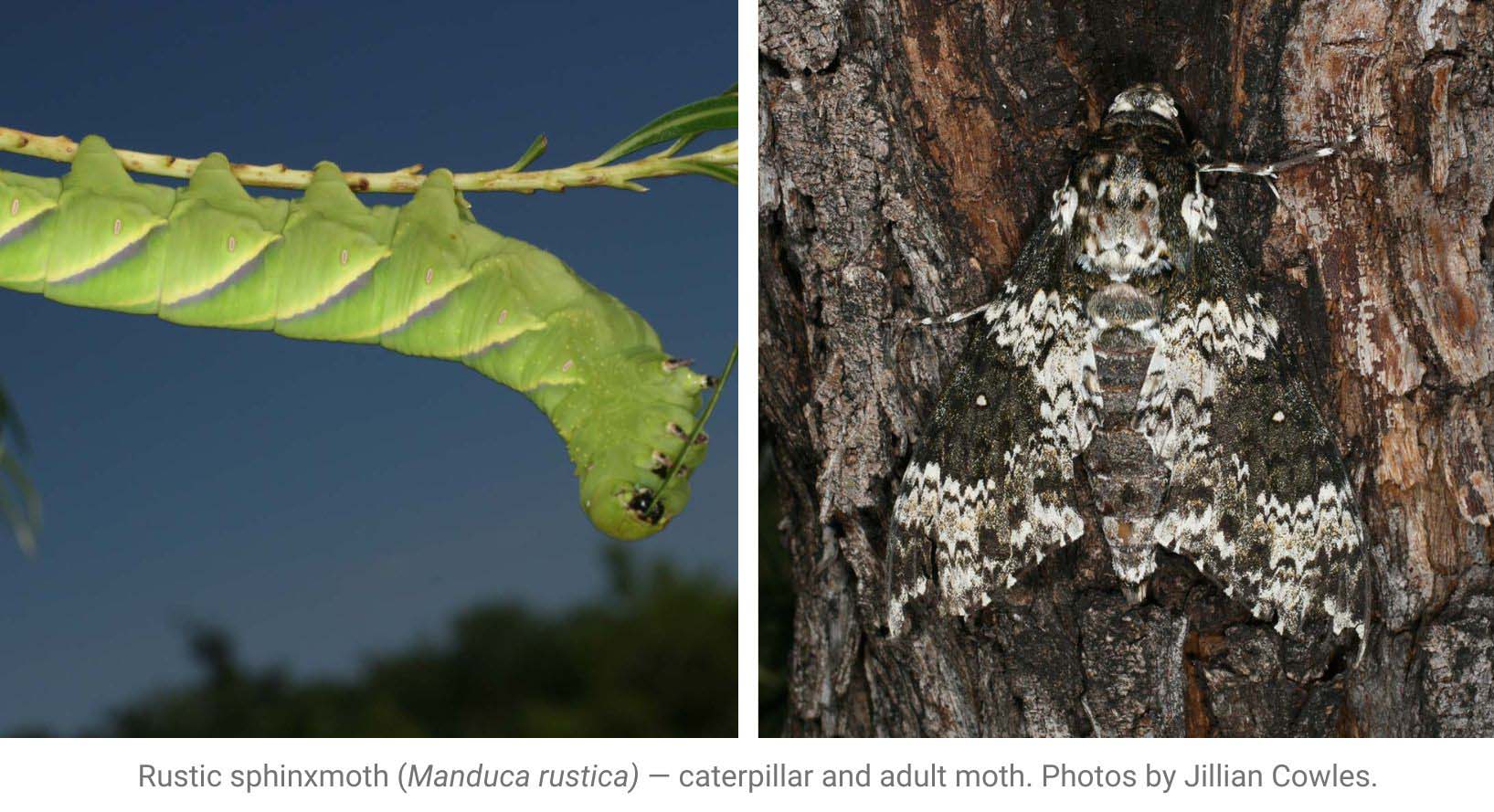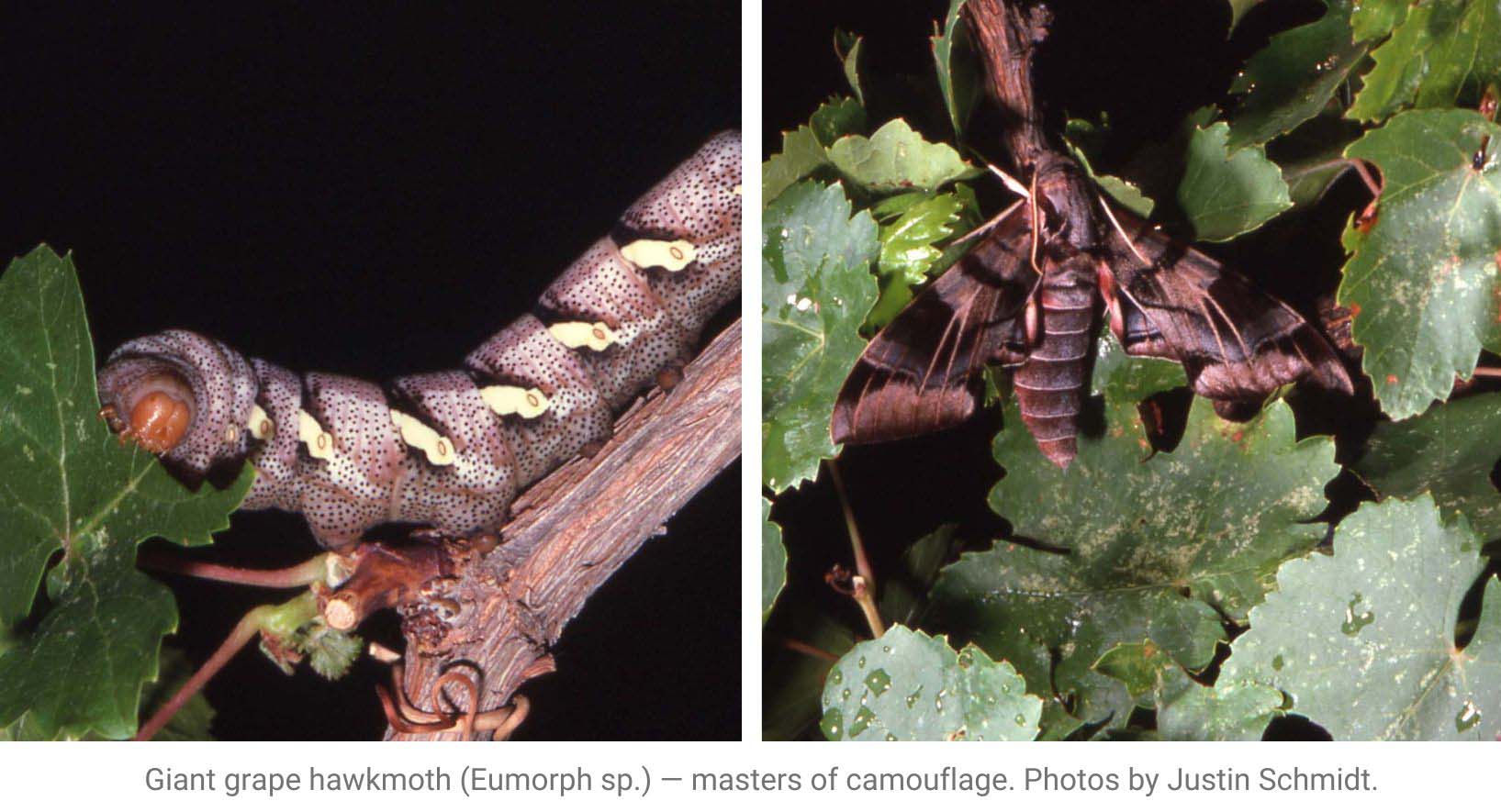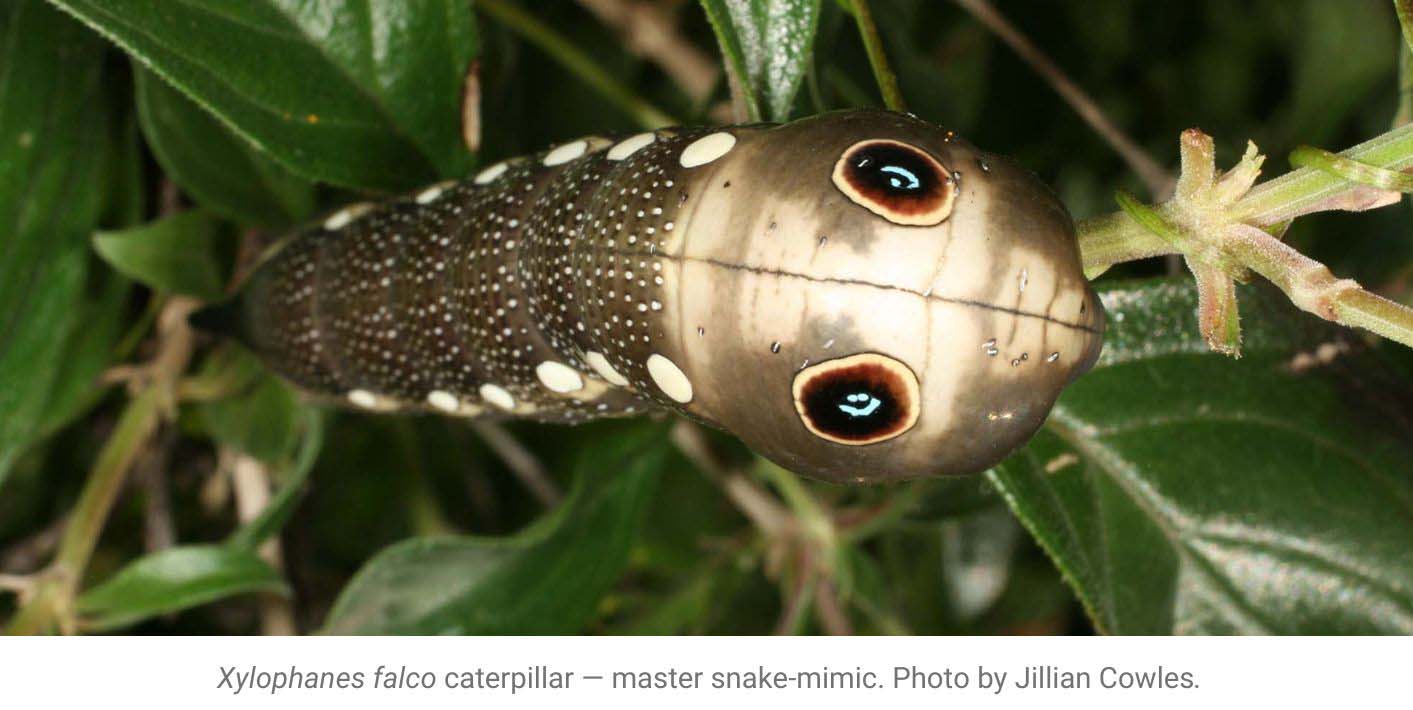Guest Blog by Justin Schmidt and Jillian Cowles
We take for granted in the Sky Islands that the summer monsoons bring flowers. But beautiful flowers as we know them today only first appeared in the final era of the dinosaurs in the Cretaceous Period. Darwin called the proliferation of plant species at that time “the abominable mystery.” But we now know that flowering plants and pollinators (mostly insects) coevolved at that time, turbo-charging the process of evolution and speciation and giving rise to the magnificent flowers and diversity we have come to love.
Let’s go on a safari to visit some beautiful hawkmoths that enrich our experiences during the monsoons. Hawkmoths, also called sphinxmoths, are large moths that as adults often resemble insect fighter jets that flit about mostly at night to find mates, lay eggs, and visit flowers. The caterpillars of these moths are called hornworms because they typically sport an erect, thin pointed tail on their posterior. We are fortunate to have many different hawkmoths enhancing our summer experience in the Sky Islands. These moths evolved along with plants and typically follow one of two strategies. They either become specialists that feed on only one plant or a narrow group of plants. Or they become generalists that feed on a variety of different plants.

Perhaps the most familiar and abundant of our hawkmoths is the whitelined sphinx (Hyles lineata) that is typically seen during the day, flitting from flower to flower like a hummingbird. The caterpillars of this moth feed on a large variety of plants, sometimes in populations so large they migrate like armies of caterpillars across the landscape searching for fresh food. The typical caterpillar is greenish-yellow with two long black stripes, but they can range in color from green to black.

Another common generalist-feeding hawkmoth is the rustic sphinx (Manduca rustica), a relative of the tobacco hornworm that in the Sky Islands is frequently found on plants in the family Bignoniaceae such as desert willow (Chilopsis linearis), yellow bells (Tacoma stans), and catclaw vine (Macfadyena unguis-cati), as well as Arizona ash tree (Fraxinus velutina) and other plants. Their huge caterpillars can sometimes weigh nearly an ounce — larger than some small birds. Adults are brownish with splashes of white and black, and their abdomen has three bright yellow spots on each side. At rest, adult wings are folded over the abdomen, concealing the yellow spots. If disturbed the moth can expose these spots in an attempt to startle potential predators and allow the moth to escape.

Moving on to specialists, the giant grape hawkmoth (Eumorpha typhon) feeds only on wild grape, Virginia creeper, and related plants. This hawkmoth species is also a master of camouflage that hides from predators at all stages of its life. The green eggs are laid as singletons on the underside of leaves. The eggs hatch into small caterpillars that can be either green like leaves or pink like the stems of grape leaves. After four molts, the large mature caterpillars can be green like leaves or a burgundy-gray like large grape vines. Finally, the adults are a mottled combination of black, gray, and pinkish-brown. Another curiosity of mature caterpillars in this genus is that they are “hornless hornworms.” That is, they have no pointed tail on their posterior — unlike other hawkmoth caterpillars. The caterpillars can also grow enormous, weighing 28 grams.

Erinnyis ello (no common name) is another mostly specialist hawkmoth that feeds mainly on plants in the spurge family Euphorbiaceae. In our region the gorgeous green caterpillars are frequently found feeding on mala mujer (Cnidoscolus angustidens), apparently unaffected by the painful stinging spines of the host plant.

For a final stop on our hawkmoth safari, let’s visit the ultra-specialist Xylophanes falco. The caterpillars of this hawkmoth feed exclusively on smooth bouvardia (Bouvardia glaberrima). The adult is an unimpressive small, streamlined greenish-brown hawkmoth with tannish lines on the hind wings. But the caterpillar is a spectacular snake-mimic, complete with fake scales and fake eyes. The fake eyes even have fake highlights, making them appear shiny. The caterpillar mimics a scary predator of the hungry bird or other adversary intent on having a juicy snack. Instead, the potential predator finds itself staring at something that might make it become the juicy snack!
As you can see, our Sky Island monsoon brings us a dazzling display of flowers and insects, including hawkmoths, that have coevolved over time. And this in just one corner of our planet where the coevolution of plants, pollinators, and herbivorous insects led to an explosion in speciation.
Justin Schmidt is an American entomologist and adjunct professor at the University of Arizona. He is the author of The Sting of the Wild and coauthor of Insect Defenses: Adaptive Mechanisms and Strategies of Prey and Predators.
Jillian Cowles is a clinical microbiologist, naturalist, and photographer. Her photos have appeared in several books and publications, including Amazing Arachnids, The Bees in Your Backyard, and Bugs Rule!
